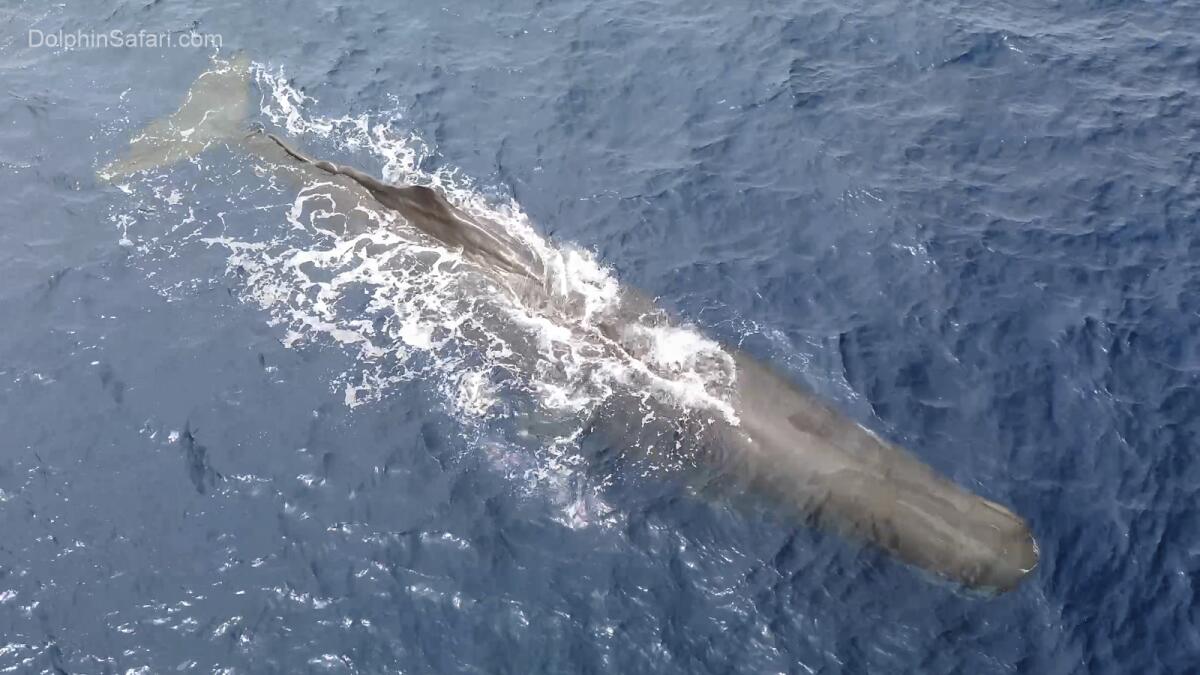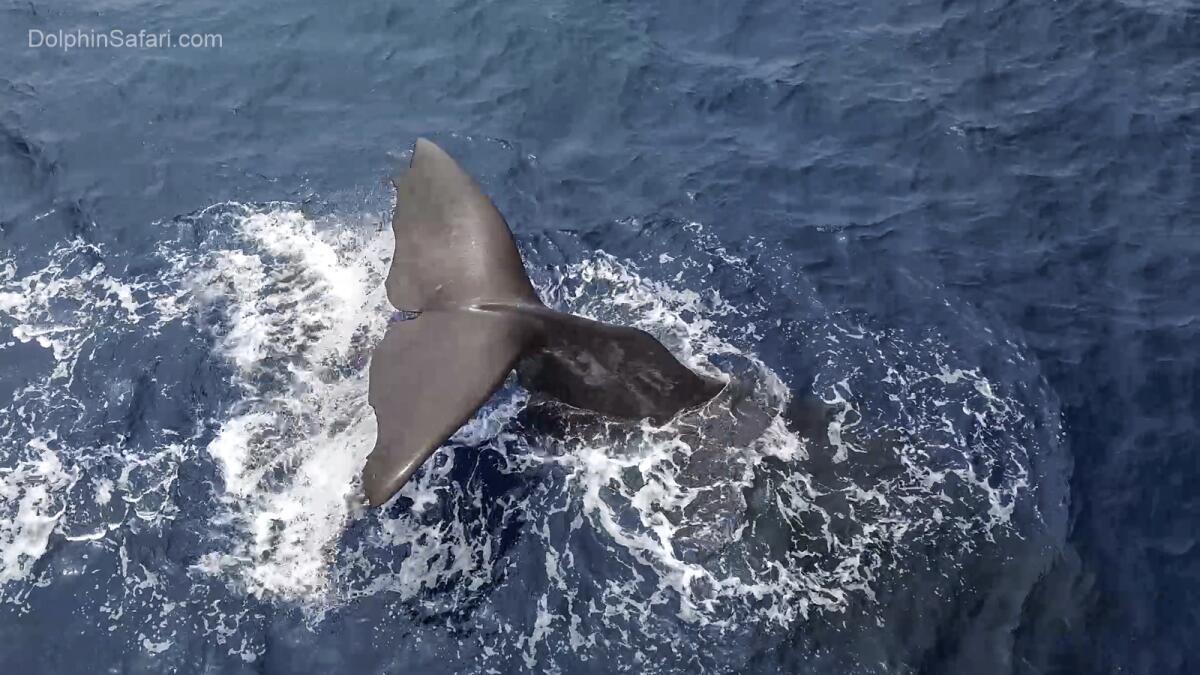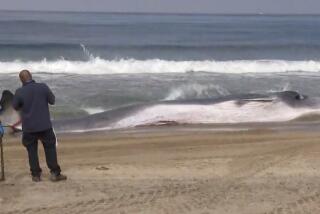Three sperm whales spotted along O.C. coast, a rare sighting of endangered mammal

- Share via
The Orange County coast draws all sorts of tourists this time of year, but some recent visitors are making a particularly big splash.
A trio of sperm whales — believed to be adult males, each about 50 to 60 feet long — has been spotted several times this past week, rare and positive sightings considering that this species’ numbers have been depleted and the massive mammals tend to spend a great deal of time in deep water.
On June 3, the group was located off Laguna Beach, and on June 4 they were found about 40 miles away from Newport Beach near San Clemente. One of the behemoths was also sighted in Dana Point on Thursday, and on Friday the three were seen between the San Pedro coast and Santa Catalina Island. One of the whales was spotted again Saturday near Redondo Canyon.
Delaney Trowbridge, a captain and wildlife photographer with Newport Coastal Adventure, has dubbed one of the whales Coconut and another Papaya — an homage to Mango, an older sperm whale who ion the past was seen quite often around the area. The third whale doesn’t yet have a moniker. The same whale-watching business spotted the cetaceans on three occasions: June 3, 4 and 9.
Papaya has been spied off the Orange County coast before. Trowbridge said he’s been seen at least 10 times over the last 10 years, including every year since 2019. But now Papaya has been seen swimming with two other whales.

On June 3, the day of the first sighting, tour guides were looking for blue whales off Laguna Beach, Trowbridge said. When they saw a whale surface and spout, they realized it wasn’t the upward stream of a blue whale but an outward geyser.
Sperm whales’ blowholes on the side of their heads.
“As soon as you see one blow, then you know it’s a sperm whale,” said Dave Anderson, owner of Capt. Dave’s Dolphin & Whale Watching Safari. “There’s nothing else it can be, because it shoots out the side and they have these huge, wide tail flukes. It’s a pretty spectacular thing to see.”
A group went out looking specifically for the sperm whales last Sunday and found them near San Clemente, Trowbridge said.
On Friday, the three were spotted between the San Pedro coast and Catalina, she added.
Papaya was seen again Saturday near Redondo Canyon by Eric Martin, aquarist director at Roundhouse Aquarium, who used an underwater device called a hydrophone to listen for the rhythmic clicking of the whale’s echolocation to find him.
Martin said that when he found the giant on the surface, Papaya decided to do something crazy: sleep. Sperm whales sleep in two ways: with their head down or face up, Martin said. He added that he knew the whale was asleep when the mammal was at the surface for a longer time usual. They usually stay at the surface for several minutes, according to the National Oceanic and Atmospheric Administration.

Trowbridge said it’s hard to know how long they’re going to stay.
“As long as there’s food, they might continue to stick around,” she said.
Sperm whales can be hard to spot. They usually are found in deep water and can stay submerged for up to 90 minutes, which helps them hunt for food such as squid.
“It’s really easy to pass through an area where one might be and never even know that it was there,” Trowbridge said.
Anderson said that the first time he saw a sperm whale, it stayed below the surface for 36 minutes.
Newport Coastal Adventure has been tracking the whales using a hydrophone, Trowbridge said.
They were able to hear the whales from about seven and a half to eight miles away.
The whales’ names are derived from a semi-liquid waxy substance found in their heads — known as spermaceti — that was once used for lubrication and lamp fuel, according to the National Wildlife Federation. According to the NOAA, the waxy substance helps the mammals focus sound.

Sperm whales are listed as an endangered species. There once may have been as many as 1.1 million of them, but whaling depleted the population and now there are about 300,000 left, according to the wildlife federation.
Caitlyn Nieblas, a deckhand and photographer for Capt. Dave’s Dolphin & Whale Watching Safari, said she was excited when she heard that one of the boats had spotted the whales because they have been a rare sight along the Dana Point coast.
“We, like all the crews, started jumping up and down and getting really excited because it’s been so long since we’ve seen them. We kind of thought we would just never see them here,” she said. “It was a really big deal for all of us.”
Trowbridge said seeing a sperm whale in person is always exciting because of how hard they are to find.
“It’s extremely exciting, just because they are hard to see, hard to find, and they’re sort of this legendary animal that has a lot of cultural significance to a lot of people around the world — and also somewhat mythical in that, obviously, ‘Moby-Dick’ was inspired by a sperm whale,” she said.
“And so it’s kind of like seeing a unicorn almost. It’s a really, really cool animal.”
More to Read
Sign up for Essential California
The most important California stories and recommendations in your inbox every morning.
You may occasionally receive promotional content from the Los Angeles Times.











